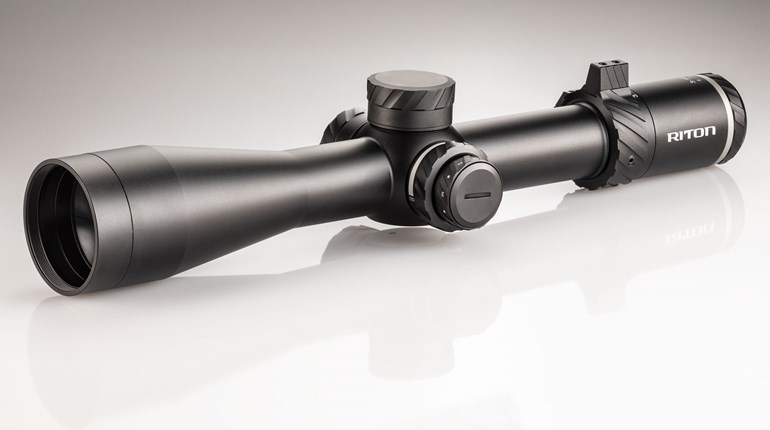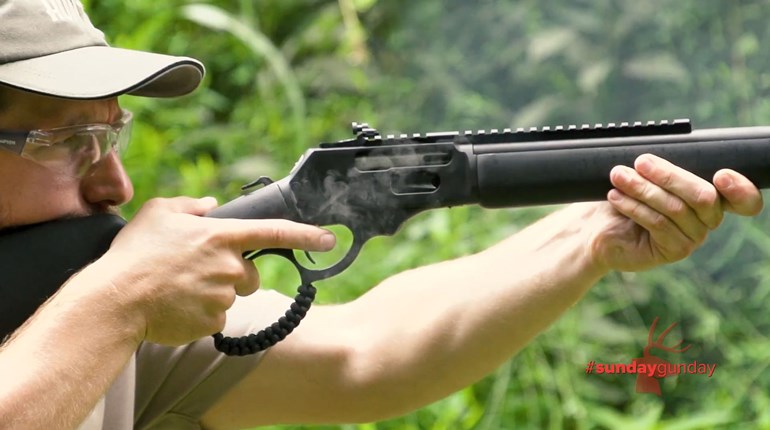
Shorter firearms were the go-to for shop owners of the Old West. The compact nature of stagecoach shotguns, carbine rifles and short-barreled pistols meant that they could be stored in more places, and had less of a chance of getting hung up on the underside of the counter during presentation. Smaller guns also travel easier and are much nicer on the hip if you spend a lot of time on your feet. When you think of a professional who earns a living standing behind a counter, the first person that may come to mind is the saloon owner. Heritage now brings us the Barkeep revolver in honor of that tradition.
The Barkeep is a spin-off of Heritage’s smash hit, the Rough Rider. At its core is the same single-action mechanism chambered in the fun-to-shoot .22LR. What sets it apart from the original is its stubby barrel, measuring just 2.67”. As for the grip, it retains the original profile, which allows for a full double-fisted grasp. The idea is that the gun is built to represent what was done to make a compact pistol in those days, and that usually meant nothing more than cutting off a length of barrel. The resultant firearm carries and swings like a compact, but fits the hand and shoots like a full size (sort of like an olde-tyme Glock 19x).
Completing the nostalgic package is a case-hardened finish to the brass-colored frame and your choice of grey pearl or wooden stocks. Sound fancy and expensive? Not really. The scrollwork-clad version used in this review only carries an MSRP of $160.61, which means you’ll likely find these at your local gun store for $150 or less. So this gun checks all of the boxes for me because it looks pretty, yet is inexpensive enough to shoot and enjoy. There was nothing left to do but grab a fifth of ammo from Federal and CCI and “belly up” to my favorite shooting point to serve some unfortunate paper a few shots.
The Barkeep is designed to represent a defensive handgun, so I tested it as such. At 7 yards I placed an NRA B3 style target and went to work. I started with some rack-grade Federal ammo (coincidentally called “BYOB”), and delivered a heavy pour to get a feel for the gun. The three-finger grip made the gun comfortable, and each shot went down smooth. The cylinder gap was well-designed, venting everything away, and didn’t leave much “aftertaste” when firing. I also found that the gun had more than enough balance to recite the alphabet on one foot.
The only thing that muddled the works was the lack of an ejector rod. As the barrel of the Barkeep is so short, an ejector rod would probably look funny sticking out past the muzzle. Instead, Heritage included a separate ejector rod tool that must be carried with the gun to pop out fired cases. On the bright side, we didn’t need it for many, as gravity took care of its fair share and the majority of the others were able to be picked out with a fingernail.
The trigger was absolutely amazing for such an inexpensive handgun; it’s Dom Perignon at a Pabst Blue Ribbon price. Seriously though, it broke cleanly at 3 lbs., 5 oz., and didn’t have a drip of overtravel. On the same day, I tested a gun with an MSRP literally 10 times the price tag, and its trigger didn’t measure up to the Barkeep.
My impacts were very close to my 6 o’clock hold at the 7-yard target and I found them to be spot on at 15 yards … so I guess the “Makers” made their “Mark” for longer distances. As the sights are fixed, your options are to either learn your holds or get out the file (which isn’t an Absolut no on a $150 gun). I fired some top-shelf CCI Match Pistol ammo at the same 7-yard target and turned in some impressive groups that measured as small as 1.22”. This action is also capable of accepting a .22 WMR cylinder, in case you want to up the proof of this pint-sized pub popper. However, at the time of this writing, it hadn’t finished aging yet.
Last call involved nothing more than a CLP wipe down, as the finish on the Barkeep doesn’t bruise easily. I chased it with a cotton rag to remove the excess and then finished my side work. In case you couldn’t tell, I spent a few years behind the stick myself and would like to think I would have carried something like this in my apron if I were to live in the 1860s. The only tip I have for Heritage is to consider a model that includes a barrel-mounted ejector rod. For more information visit heritagemfg.com







































